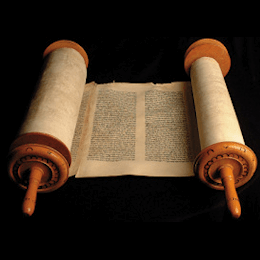Textus Receptus Bibles
Masoretic Text 1524
Old Testament
| 86:1 | תפלה לדוד הטה יהוה אזנך ענני כי עני ואביון אני׃ |
| 86:2 | שׁמרה נפשׁי כי חסיד אני הושׁע עבדך אתה אלהי הבוטח אליך׃ |
| 86:3 | חנני אדני כי אליך אקרא כל היום׃ |
| 86:4 | שׂמח נפשׁ עבדך כי אליך אדני נפשׁי אשׂא׃ |
| 86:5 | כי אתה אדני טוב וסלח ורב חסד לכל קראיך׃ |
| 86:6 | האזינה יהוה תפלתי והקשׁיבה בקול תחנונותי׃ |
| 86:7 | ביום צרתי אקראך כי תענני׃ |
| 86:8 | אין כמוך באלהים אדני ואין כמעשׂיך׃ |
| 86:9 | כל גוים אשׁר עשׂית יבואו וישׁתחוו לפניך אדני ויכבדו לשׁמך׃ |
| 86:10 | כי גדול אתה ועשׂה נפלאות אתה אלהים לבדך׃ |
| 86:11 | הורני יהוה דרכך אהלך באמתך יחד לבבי ליראה שׁמך׃ |
| 86:12 | אודך אדני אלהי בכל לבבי ואכבדה שׁמך לעולם׃ |
| 86:13 | כי חסדך גדול עלי והצלת נפשׁי משׁאול תחתיה׃ |
| 86:14 | אלהים זדים קמו עלי ועדת עריצים בקשׁו נפשׁי ולא שׂמוך לנגדם׃ |
| 86:15 | ואתה אדני אל רחום וחנון ארך אפים ורב חסד ואמת׃ |
| 86:16 | פנה אלי וחנני תנה עזך לעבדך והושׁיעה לבן אמתך׃ |
| 86:17 | עשׂה עמי אות לטובה ויראו שׂנאי ויבשׁו כי אתה יהוה עזרתני ונחמתני׃ |

Masoretic Text 1524
The Hebrew text of the Old Testament is called the Masoretic Text because in its present form it is based upon the Masora—the Hebrew, textual tradition of the Jewish scholars known as the Masoretes (or Masorites). The Masoretes were rabbis who made it their special work to correct the faults that had crept into the text of the Old Testament during the Babylonian captivity, and to prevent, for the future, its being corrupted by any alteration. They first separated the apocryphal from the canonical books, and divided the latter into twenty-two books, being the number of letters in the Hebrew alphabet. Then they divided each book into sections and verses.
There is a great difference of opinion as to when the Masoretic Text was written, but it was probably accomplished in the 10th -11th century. Several editions existed, varying considerably, but the received and authoritative text is that of Jacob ben-chayim ibn Adonijah, who carefully sifted and arranged the previous works on the subject. It was published in 1524.